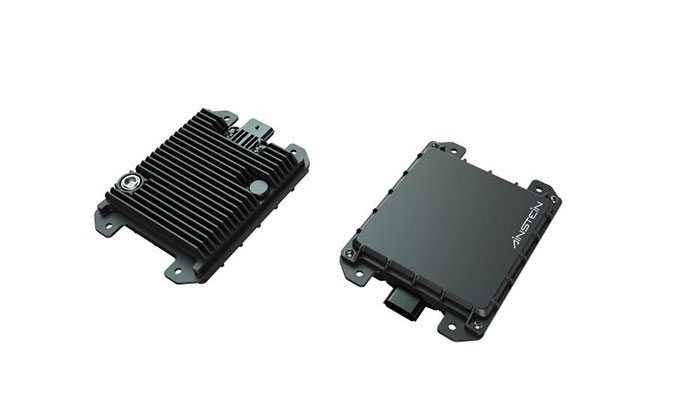Recent developments in radar-based technology have become increasingly beneficial for specialty vehicles.
By Andrew Boushie, Vice President Strategy & Partnerships at Ainstein
Self-driving vehicles should no longer be thought of as a futuristic idea. In fact, manufacturers have already taken advantage of them to reduce the risk of human error on job sites where specialty vehicles are being utilized. How is this possible? They’ve turned to radar.
Recent developments in radar-based technology have become increasingly beneficial to the automobile industry. For specialty vehicles, in particular, self-driving automotive technology opens the door to numerous possibilities that were not available a decade ago. Now, commercial imaging radar sensors are being used with self-driving trucks, tractors, bulldozers, and other emerging autonomous automobile applications to further the development of intelligent job sites.
Positive impacts of radar technology for specialty vehicles include:
Specialty vehicles pose grave risks of injury and death to workers. When operating in an environment with hundreds of actions happening simultaneously, safety is a top priority. Tens of thousands of construction workers are injured while on the job each year, many incidents occurring when workers were, in fact, operating some kind of specialty vehicle. According to the United States’ Occupational Safety and Health Administration (OSHA), there have been more than 200 worker fatalities related to specialty vehicles registered since 2017.
On job sites, specialty vehicles must be able to anticipate and detect dangerous situations to prevent them from happening. There are no traffic signs, lane lines, or established infrastructure to help guide vehicles on correct paths. Luckily, imaging radar can capture details of the surrounding job site, such as other vehicles and workers, as well as stationary objects including crates, materials, poles, etc.
Not only can sensor solutions be used to detect objects, but they can also collect object position data for real-time alerts—or even halt the vehicle mid-action—if they unintentionally come too close to people or detect a hazardous situation. This keeps the operator and everyone else safe. Additional applications include forward collision warning, headway monitoring warning, automatic braking, adaptive cruise control, and more.
Job sites are expected to continue operating smoothly, rain or shine, regardless of the season. If a construction project is delayed, several entities eat the cost. Because of this, there has been an urgent market need for sensors that provide LiDAR-like images, but that can function effectively where LiDAR is compromised, such as extremely bright, extremely dim, dusty, and similar conditions.
While other solutions are threatened by non-optimal weather and the various environmental conditions mentioned above, radar offers highly reliable performance. Additionally, they bring an unparalleled understanding of the real-time operating environment for autonomous specialty vehicles in rough and challenging conditions.
Often full of dust and other debris flying around, radar sensors are ideal and even more critical for safe operation on job sites. Specialty vehicles can have the ability to penetrate dust, rain, and snow, and offer the same reliable safety functionality in bad weather and no light conditions.
Radar is now capable of collecting position data to provide real-time alerts for operators by incorporating a combination of mmWave radar, sensor fusion, and artificial intelligence. As mentioned, a delay in operations is expensive—for example, a collision between equipment will need repairing—so taking the project off schedule is not an option. This allows an operator to be more immersed in the task being performed as opposed to focusing on obstacle and collision avoidance.
In addition to collecting helpful data, operators enjoy how radar sensors are designed to be highly accurate at capturing the details of the surrounding scene. Through 2D point cloud mapping along with speed information, as well as detecting the 3D shape of an object, radar solutions make an operator’s job easier.

Ainstein K-79 sensor can be used for smart specialty vehicles.
They are also easy to integrate and use, allowing specialty vehicles to provide excellent operator experience. Radar sensors are purposely designed for peak productivity and can be strategically placed on the exterior of the vehicle, delivering unmatched performance in tough working environments.
As we enter an exciting era of technological innovation, the specialty vehicle industry has never been so dynamic. With radar sensing technology at the forefront, there is no doubt that operations on job sites will run more efficiently and safer than ever before. Radar’s powerful computing platforms, advanced signal processing algorithms, and resistance in all types of weather allow specialty vehicles, and the operators who use them, to prosper while on the job site.

Andrew Boushie
Andrew Boushie is Vice President of Strategy and Partnerships at Ainstein. In this role, Boushie leverages over fifteen years of experience in technology sales and partnership development to increase Ainstein’s presence in the autonomous vehicle and IoT industries.
Website: https://ainstein.ai/
Email: hi@ainstein.ai
Scott Ellyson, CEO of East West Manufacturing, brings decades of global manufacturing and supply chain leadership to the conversation. In this episode, he shares practical insights on scaling operations, navigating complexity, and building resilient manufacturing networks in an increasingly connected world.